
Table Of Contents:
What Is Xeriscaping?
Is Xeriscaping Suitable For The Ontario Climate?
What Drought-Resistant Plants Should You Use In Xeriscaping?
How To Begin Your Xeriscape Garden At Home
Irrigation Techniques For Xeriscape Landscaping
Landscaping Tips To Design A Beautiful & Functional Xeriscape
Xeriscaping Maintenance Tips
Considerations Before You Start Xeriscaping
What Is Xeriscaping?
Xeriscaping is a smart way to plan your backyard so it uses less water. The word comes from the Greek “xeros,” which means dry. Simply put, xeriscaping means choosing plants that don’t need much water, preparing the soil well, and watering only when necessary.
Xeriscaping started as a way to save water, but today, it’s all about creating beautiful outdoor spaces that work well in places like Ontario.
At Action Home Services, we combine luxury landscaping with smart xeriscaping to help your Ontario garden stand out while being eco-friendly. Xeriscaping doesn’t mean you have to give up a lush, vibrant garden. It means smart planning to keep your garden green and healthy, even during dry times.
Is Xeriscaping Suitable For The Ontario Climate?
Ontario’s weather can be tricky. We have cold winters, humid summers, and lately, more dry spells. Water levels in the Great Lakes and surrounding areas have dropped. This makes saving water in your backyard more important than ever.
The good news is that many native Ontario plants are built to handle dry spells and harsh weather. When you combine these with tough plants from other regions and design your space carefully, you get a landscape that stays strong all year round.
Here at Action Home Services, we’ve seen more homeowners interested in xeriscaping that fits Ontario’s unique weather. Whether you’re an experienced gardener or new to planting, with the right plants, soil, and watering, your xeriscape will thrive through hot summers and cold winters.
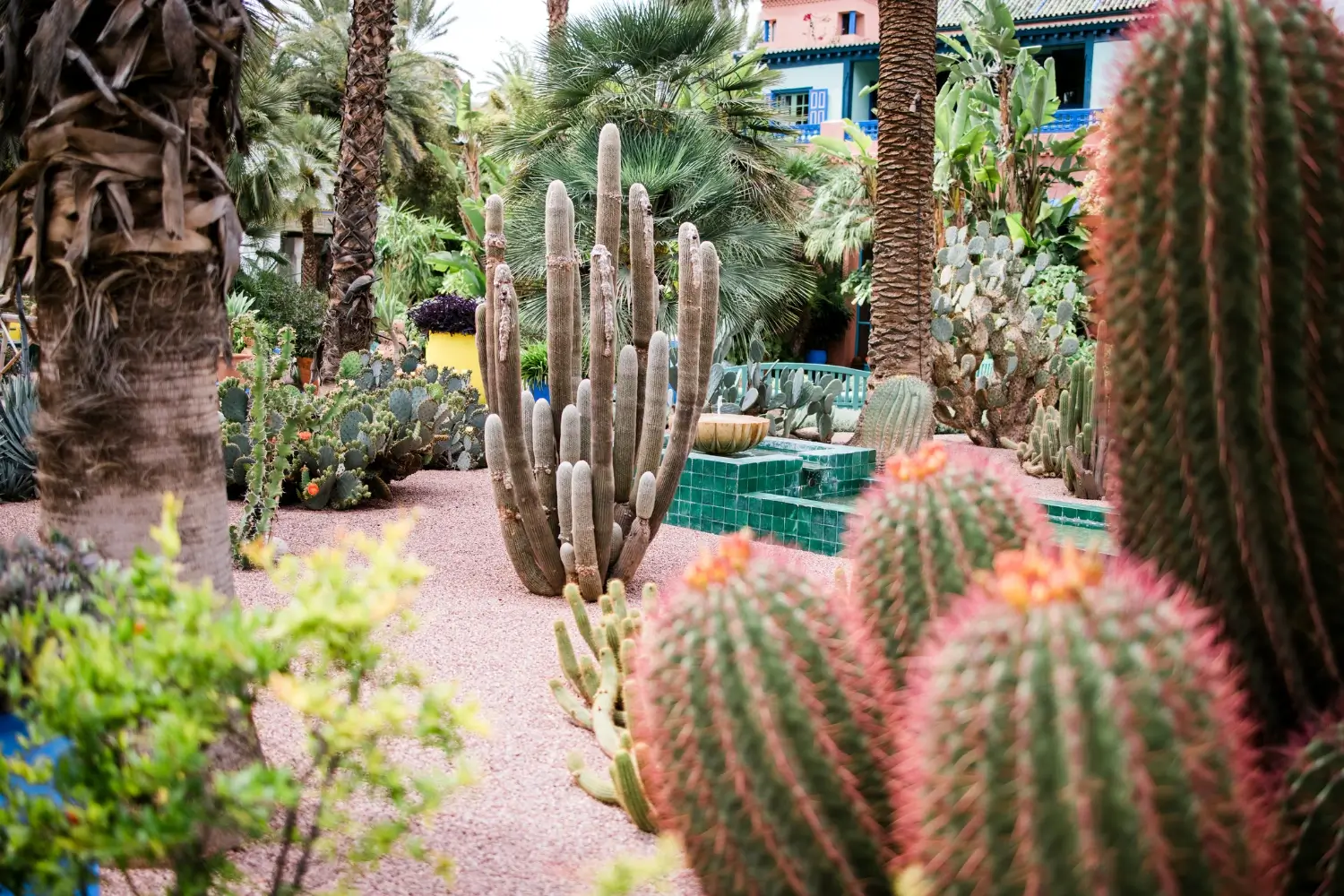
What Drought-Resistant Plants Should You Use In Xeriscaping?
Choosing the right plants is key to a successful xeriscape. At Action Home Services, we recommend mixing native Ontario plants with hardy non-native plants. Together, they create a garden that’s both beautiful and resilient.
Ontario Native Drought-Resistant Plants
- Butterfly Milkweed: Bright orange flowers that love dry, sandy soil. This plant helps Monarch butterflies and other pollinators. It grows well in well-drained soil and doesn’t like too much water.
- Pearly Everlasting: Has soft, silvery leaves and small white flowers. It blooms in summer and handles poor, dry soil. It spreads slowly to fill empty spaces.
- Big Bluestem: A tall prairie grass with deep roots that help it survive droughts. It changes colour in fall and stays attractive through winter.
- Nodding Onion: Small plant with purple flowers that attract hummingbirds and bees. It grows well in rocky or sandy soil.
- New Jersey Tea: A low shrub with white flowers and a strong root system. It survives dry, sunny spots and supports pollinators.
Popular Non-Native Drought-Tolerant Plants
- Lavender: Known for its lovely scent and purple flowers. Lavender loves full sun and dry soil. It also attracts bees and butterflies.
- Sedum (Stonecrop): Succulent plants with thick leaves that store water. They bloom in late summer and are great for ground cover or rock gardens.
- Hens and Chicks: Small, rosette-shaped succulents that need very little water. They work well in containers or rock gardens.
- Daylilies: These bright flowers are tough and bloom for a long time. They don’t need much water once settled.
- Blanket Flower: Produces colourful, daisy-like flowers that bloom all summer. They grow well in dry, sandy soil and attract butterflies.
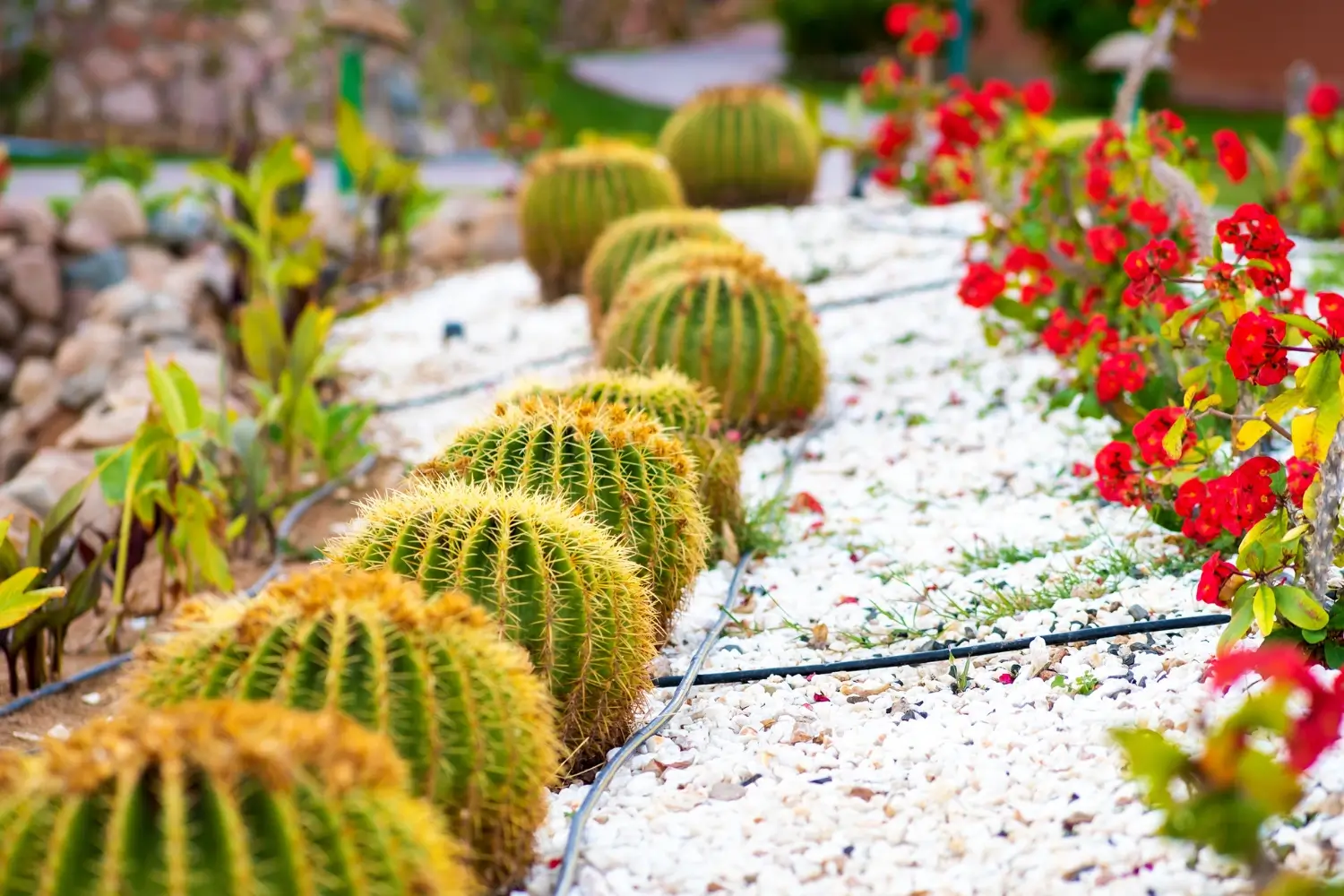
How To Begin Your Xeriscape Garden At Home
Starting a xeriscape can feel overwhelming, but breaking it into manageable steps helps simplify the process.
- Assess Your Site: Take note of sunlight exposure, soil type, drainage, and existing vegetation. Understanding these will inform plant selection and design.
- Plan Your Design: Group plants with similar water needs together to create efficient irrigation zones. Consider the overall aesthetic - colour, texture, height, and bloom times - to ensure year-round interest.
- Prepare Your Soil: Xeriscaping favours well-drained soil. Avoid heavy soil amendments that hold water; instead, loosen compacted areas and add organic matter if necessary to improve texture.
- Select Plants: Choose a balanced mix of natives and hardy ornamentals suited for your soil and light conditions.
- Install Efficient Irrigation: Consider drip irrigation or soaker hoses to deliver water directly to roots, reducing waste.
- Mulch: Apply organic mulch to retain moisture, suppress weeds, and regulate soil temperature.
Irrigation Techniques For Xeriscape Landscaping
Water efficiency is paramount in xeriscaping. Ontario homeowners should look beyond installing traditional sprinklers and consider:
- Drip Irrigation: Delivers water slowly and directly to the plant root zone, reducing evaporation and runoff.
- Soaker Hoses: An affordable alternative that seeps water evenly along their length, ideal for garden beds.
- Smart Controllers: Use weather and soil moisture data to adjust watering schedules automatically.
- Rain Barrels: Collect and store rainwater for supplemental irrigation. Even one large downspout barrel can capture enough water to irrigate containers and new plantings.
Integrating these techniques helps conserve water without sacrificing garden health - something our team at Action Home Services recommends strongly for all Ontario xeriscapes.
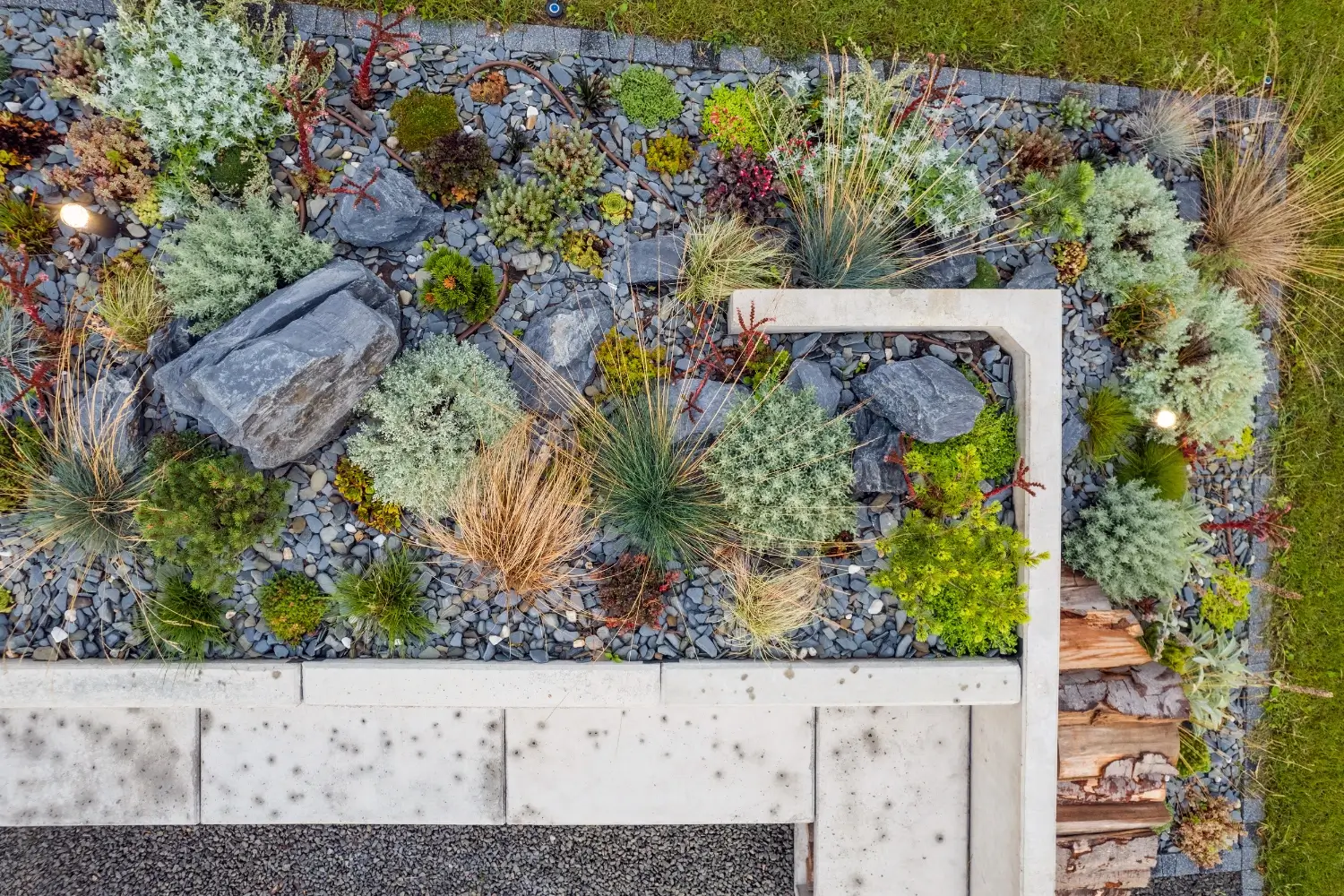
Landscaping Tips To Design A Beautiful & Functional Xeriscape
Designing a xeriscape is more than just planting drought-tolerant plants. It’s about creating a space that looks great, works well, and saves water. Here’s how to design a beautiful and practical xeriscape for your home:
1. Build Visual Interest with Layers and Contrast
Xeriscaping doesn’t mean your garden has to be boring. To make it interesting, use plants with different colours, textures, and heights.
- For colours: Mix silvery, blue-green, and dark green leaves. For example, Pearly Everlasting has soft grey-green leaves, and Big Bluestem has rich green blades. Together, they create a nice contrast.
- For texture: Try pairing coarse plants like ornamental grasses with soft, fuzzy ones like lamb’s ear or hairy penstemon.
- For height: Place taller plants such as New Jersey Tea or Big Bluestem at the back. Put medium-height plants like Butterfly Milkweed in the middle. Finally, plant low-growing groundcovers like creeping thyme in front. This layering adds depth and makes the garden feel full.
2. Add Hardscaping for Structure and Style
Hardscaping gives your xeriscape a polished look and reduces how much water your garden needs.
- Use natural stone or flagstone from Ontario to create paths. These interlocking stone walkways invite you to wander through your garden while reducing lawn areas.
- Gravel beds or rock gardens between plants help keep moisture in the soil and make the space look clean and modern.
- Large boulders add visual interest and create small sheltered spots for plants. They also soak up heat, which can help plants grow.
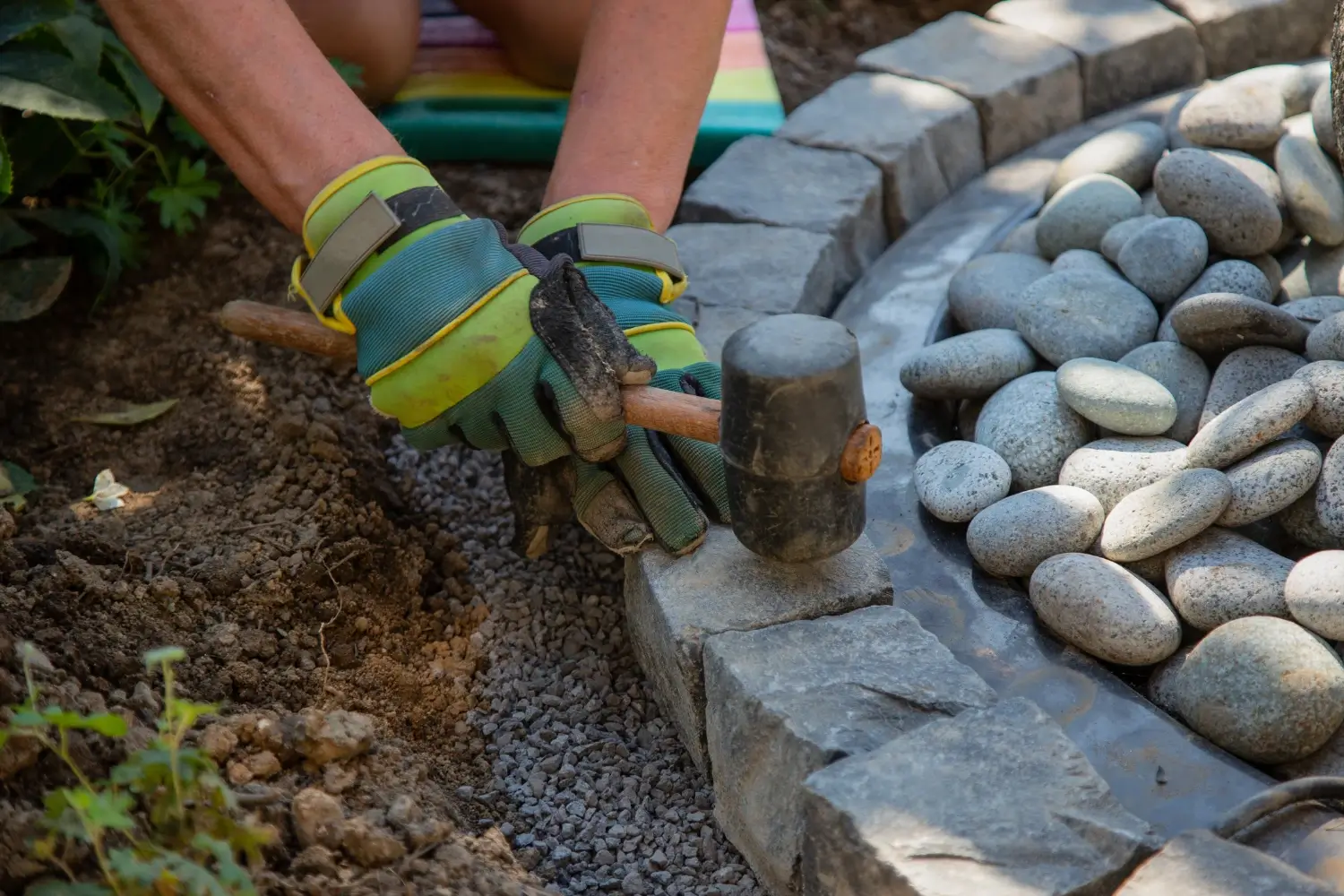
3. Use Living Mulches and Groundcovers
Living mulches are plants that cover the ground. Examples are thyme, ajuga, and creeping sedums. They do a lot of good things for your xeriscape:
- They keep the soil moist by shading it and cutting down evaporation.
- They stop weeds from growing, so you don’t have to pull them out as often.
- Their leaves and flowers add colour and texture all year long.
- They help keep the soil healthy by stopping erosion and supporting good soil bugs.
4. Plan for Colour All Year with Succession Planting
To keep your garden looking lively from spring to fall, choose plants that bloom at different times.
- In spring, plants like Nodding Onion and Wild Lupin give you early colour.
- In summer, Butterfly Milkweed, Blanket Flower, and Lavender bring vibrant blooms.
- In fall, plants like Big Bluestem, Grey Goldenrod, and Heath Aster keep the garden interesting with their colours and flowers.
This way, you’ll always have something blooming. Plus, it attracts lots of pollinators and wildlife throughout the seasons.
5. Add Shade with Pergolas, Trellises, and Climbers
Shade is not just a nice touch - it actually helps your xeriscape thrive. Shade cools the soil and lowers water loss. It also makes your outdoor spaces more comfortable... include built-in seating with our custom pergola installations for an added touch of luxury!
- Pergolas and trellises add height and give plants like clematis or climbing roses a place to grow.
- Shade trees or large shrubs, such as serviceberry or hawthorn, can be planted where they’ll cool your yard without needing too much water.
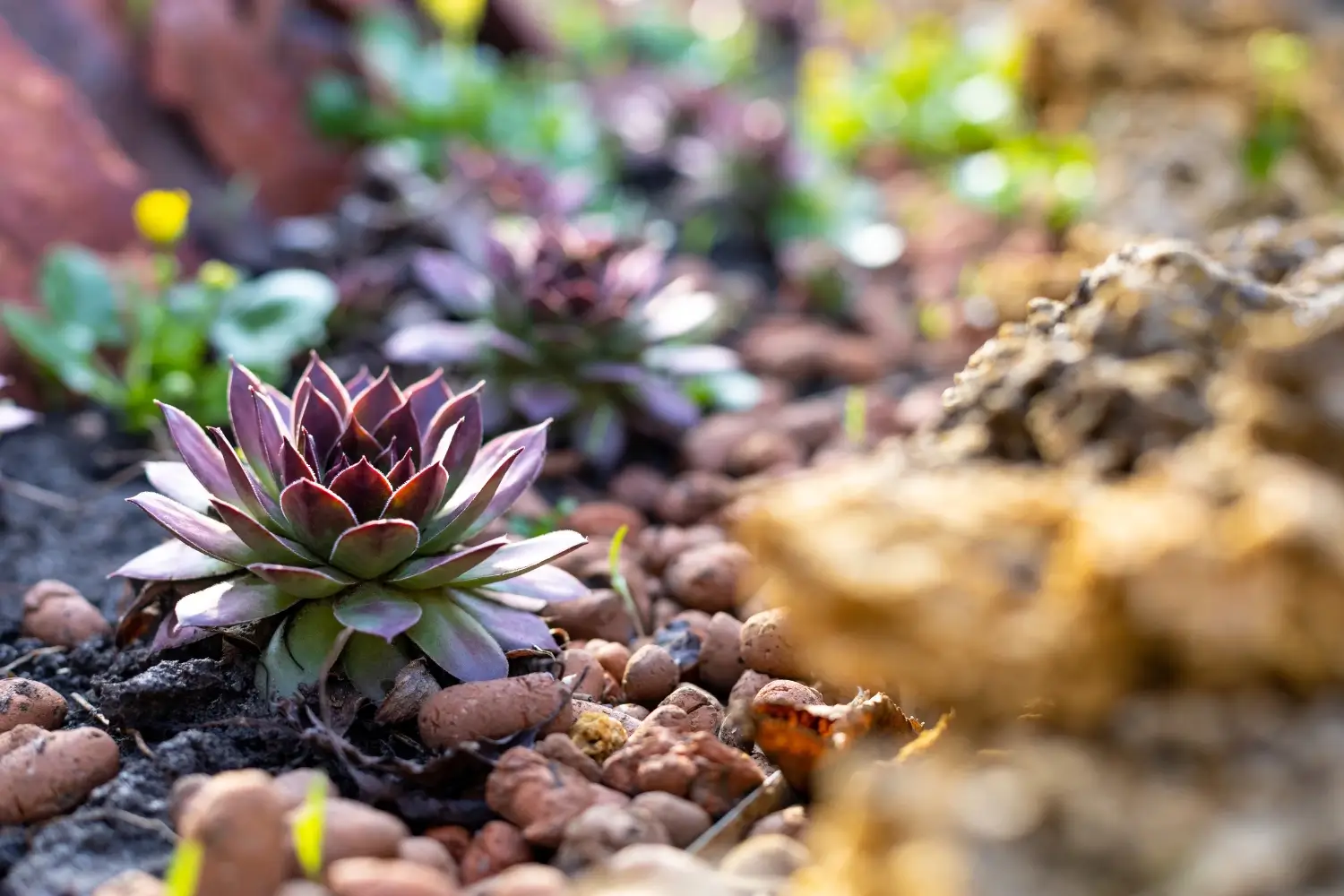
Xeriscaping Maintenance Tips
Xeriscapes need less work than regular gardens, but still need some care.
- Water young plants regularly for the first 1–2 years.
- Add mulch every year to keep moisture in and weeds out.
- Deadhead flowers to encourage new blooms.
- Weed when needed, though mulch helps keep them down.
- Avoid heavy fertilisers; most drought-tolerant plants like soils.
Considerations Before You Start Xeriscaping
Before transforming your lawn or garden, consider:
- Suitability: Xeriscaping is ideal for dry, sunny areas but may not suit heavily shaded or moisture-rich sites.
- Aesthetic Goals: Understand that xeriscapes have a different look and feel from lush traditional gardens; some homeowners prefer a mix.
- Local Regulations: Check for any municipal restrictions or incentives related to drought-tolerant landscaping.
- Water Access: Xeriscaping minimises water needs but may still require irrigation during establishment.
- Soil Conditions: Rocky or clay-heavy soils might require amendment for proper drainage.
- Wildlife Needs: Native plants support pollinators and local fauna; consider ecological benefits in your design.
Our experts at Action Home Services consult closely with you to ensure xeriscaping is the right fit for your property and lifestyle.
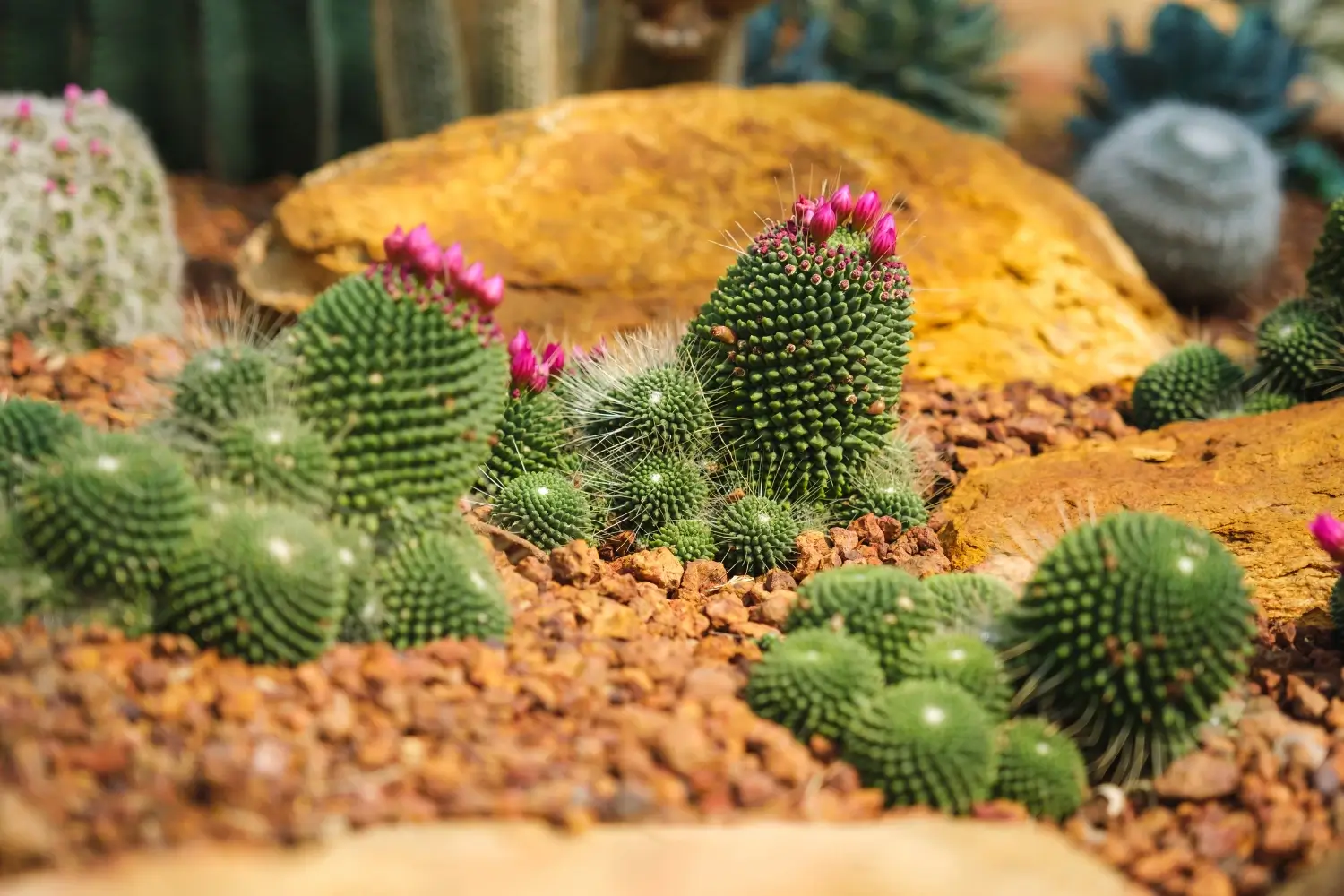
Want To Begin Your Xeriscaping Journey?
Xeriscaping in Ontario is a smart, sustainable landscaping choice that conserves water, reduces maintenance, and creates stunning outdoor living spaces. With expert planning, smart plant selection, and efficient irrigation techniques, your xeriscape can thrive through hot summers and chilly winters alike.
As Ontario’s trusted luxury landscaping professionals, Action Home Services is dedicated to helping homeowners across Southern Ontario design and maintain exquisite xeriscapes that elevate their homes and respect the environment.


